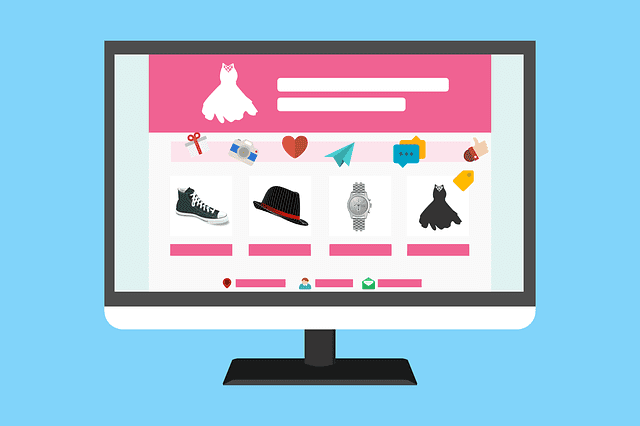You can improve your online business by employing these tips to provide a more enjoyable experience, stand out from the competition, and increase repeat business. Throughout the coming years, the retail industry has continued to grow at an exceptional rate due to the advent of online shopping.
Retailers are expecting to generate $7.9 trillion in annual sales in 2026. Stepping into a retail store exposes you to brand displays, customer service, and engaging in-person interactions with the products you’re interested in. This can help brands deliver the same online experience to consumers.

E-commerce site leaders often use CX approaches such as Customer Journey Mapping and advanced techniques like Customer Rooms to improve the end-to-end user experience for their shopping sites. There are times, however, when the basics can be overlooked.
Digital marketing, usability, and customer relationship pros share their top tips for ensuring that when customers visit your website, they enjoy the experience – and will buy from you.
Consumers today have more places and ways to shop than ever. And they have increasingly shorter attention spans. So if you have an e-commerce business, and you want online shoppers to buy from you, you need to be able to quickly attract their attention – and make the shopping experience pleasant and easy.
Making Online Shopping More Effective
The explosion of online shopping has made it easier for businesses to reach broad audiences with few barriers.
While it made the industry ripe for competition, it also introduced an obstacle businesses must tackle to scale their operations to the next level: the customer’s online shopping experience.
American online spending totaled $1.12 trillion in 2023; projections indicate that online spending will reach $2.20 trillion in 2030 & 2.33 billion people worldwide shopped online in 2023; 10.1% were Americans
capitaloneshopping
Also known as customer experience (CX), this explores better ways of engaging with customers throughout the buying journey. It leverages customer data to build a CX strategy that will improve sales in the short term and encourage brand loyalty for a long time.
But why has CX become more critical than ever, especially for e-commerce businesses?
In e-commerce, the in-store shopping experience has disappeared entirely for some businesses. And this is where high-end customer experiences can help a company get ahead of its competitors.
How to Improve Online Shopping Experience For Customers

1- Make Your Site Responsive

Many people are making purchases on their smartphones. Your website should be responsive to ensure customers enjoy a great shopping experience on smartphones and any device. With a responsive design and professional look, your website will look extra appealing and be easy to navigate on any platform.
When it comes to responsiveness, fast checkout is also a crucial aspect when it comes to improving customers’ shopping experience. It’s quickly becoming a necessity for businesses in the modern world. It makes buying as simple and convenient as possible.
With customers expecting faster, more streamlined checkout experiences, it’s no wonder why fast checkout alternatives are gaining traction. Whether through mobile payment apps or facial recognition to speed up the process, businesses are turning to a fast checkout alternative to provide their customers with a better shopping experience.
By making the checkout process faster and easier, companies can increase conversions by removing friction. Additionally, increases customer satisfaction and loyalty while also improving their bottom line.
2- Make Your Images Friendly

Never underestimate the power of the image. We live in an increasingly visual world where getting consumer attention is paramount. When online shopping, it’s easy for the attention of consumers to wander or get lost altogether if the visual experience could be better.
By sub-par, we mean images of underlit, overexposed products that look amateurish. Consumers crave the most enticing, dynamic, yet accurate representation of what they want. If you have the budget, a 360-degree video of your product can boost sales even more.
Conversely, including images unrelated to the specific purchase can make your pages difficult to read.
In other words, images can make or break a sale. Implement them properly, and they’ll also help your site’s SEO ranking. Using images effectively requires thought and discernment, but your customers will appreciate the effort if you get it right.

3- Make Your Website Mobile-Friendly
Most people need to view your website on a computer or laptop. They’re much more likely to peruse your goods on a phone or laptop. That’s why having a mobile-friendly version of your site is crucial. This makes browsing easier and shows customers that you care about their experience with you.
Following these steps can significantly enhance your customers’ online shopping experience. This will lead to increased satisfaction, loyalty, and repeat business from your customers.
It is vital to regularly collect feedback from your customers to identify areas of improvement and make changes as necessary. You can significantly improve your customers’ online shopping experience and build long-lasting relationships by enhancing your website’s usability, mobile expertise, checkout process, and personalization over time.
4- Invest in Website Appearance

A website’s appearance is one of the most critical factors in providing a positive customer experience. Investing in the right design, layout, and visuals can significantly impact customer engagement and satisfaction.
The right design makes a website look attractive and inviting and makes it easier for customers to navigate the site and get what they need without frustration.
Start by investing in the homepage’s appeal with the right balance of visuals and educational context to suit your audience. The person browsing your website may still need to be at the purchasing stage in the customer journey. But instead, they might be in the background of awareness and consideration. Use your website to give the context browsers will need to purchase your product. Consider including customer photos, recipes, tutorials, and more, depending on your industry.
By improving their website’s appearance, businesses can ensure visitors have a unique experience when interacting with their site. This could increase conversions, brand loyalty, and overall customer satisfaction.

5- Allow users to Save Carts
Browsing and adding products to a cart is a popular pastime for online shoppers. However, the cart abandonment rate in March 2021 was nearly 80%, according to Statista data (paywall).
One of the ways to avert this is by allowing customers to save their carts for the future. If visitors are still waiting to purchase, they can return later to check out or add more items.
6- Offer Free Shipping

The cost of delivery is a deciding factor for online shopping. You must consider the price points that generate profits, but discounts and free shipping can increase your bottom line. Amazon, for instance, offers free shipping for purchases of $25 or more.
This sets the bar for how much a customer must spend to ‘save.’ Consider the customer’s point of view—would you prefer to get free shipping and buy more, or would you choose to pay for shipping and receive fewer items? The choice is often crystal clear for consumers.
Improving your customer’s online shopping experience ultimately comes down to making the buying process as easy as possible.
So, make your site responsive, invest in its appearance, share customer photos, and offer free shipping. With these tips, your online business can offer a more enjoyable experience, set itself apart from the competition, and encourage repeat purchases.

7- Remarket and Close More Business
In the past, post-engagement retargeting had needed to be more clunky and, in some cases, off-putting to the consumer. Please think of how annoying it is to receive ads for the product you purchased a month ago. Getting ads after accidentally clicking and closing a link is also frustrating.
The good news is this complicated process can be refined.
By using Marketing Cloud, you can track customers who’ve made a purchase, those who demonstrated interest but didn’t buy, and those who have been browsing elsewhere for similar products you offer. You can then remarket to those individuals based on their personalized online shopping journeys. This minimizes wasted ad spend and gives the customer what they want.
8- Remember the Site Search Bar

When they first come to your site, many customers will be looking for the ‘search’ bar. They know it’ll be the fastest way to find what they want. Make sure your is nice and prominent on the landing page, so they’re not wasting time searching for it. As well as this, make sure you invest in good search technology. You don’t want the customer walking away thinking you don’t have a product when you do.
8 Tips to Improve Websites Online Shopping Experience
The role of websites in online shopping cannot be overstated. Their purpose is to serve as digital storefronts for customers to browse, explore, and purchase products and services online. Websites play several essential roles in online shopping, including:
1- Product Display and Information
Websites provide a platform for retailers to showcase their products or services. They feature high-quality images, detailed descriptions, specifications, pricing, and other relevant information. This helps customers make informed decisions about their purchases.
2- Convenience and Accessibility
Websites make shopping convenient and accessible for customers. They can access online stores anytime from the comfort of their homes or on the go through mobile devices. Websites eliminate the need for physical travel to brick-and-mortar stores, saving time and effort.
3- Online Catalog and Search
Websites act as catalogues that present a wide range of products or services organized into categories or searchable databases. Customers can easily navigate through different sections, apply filters, and use search functions to find specific items they seek.
4- Shopping Cart and Checkout
Websites enable customers to add desired items to a virtual shopping cart. The shopping cart holds the selected products until the customer is ready to proceed to the checkout process. Customers can review their orders, choose shipping options, provide payment details, and complete the purchase during checkout.
5- Payment Processing
Websites facilitate secure payment processing. They integrate with various payment gateways to accept credit cards, digital wallets, or other payment methods. This ensures a smooth and safe transaction for customers while protecting their financial information.
6- Customer Reviews and Ratings
Websites often incorporate customer reviews and ratings for products or sellers. This feedback helps prospective buyers gain insights into the quality, performance, and reliability of the items they are interested in. It promotes transparency and assists customers in making confident purchase decisions.
7- Order Tracking and Customer Support
Websites provide features for customers to track their orders in real-time. They can view shipping details and estimated delivery dates and receive notifications about order status updates. Additionally, websites often offer customer support options, such as live chat or email, to address inquiries or resolve any issues that may arise.
Overall, websites serve as the central hub for online shopping, bringing together buyers and sellers in a digital marketplace. They streamline the entire shopping experience, offering convenience, extensive product selection, secure transactions, and customer support, ultimately enhancing the overall satisfaction of online shoppers.
8- Wrapping Up
While there are plenty of strategies to improve your customers’ online experience, it takes time to implement all of them successfully.
The five main factors identified from the literature review regarding online shopping namely, product variety, convenience, payment method, trust, and psychological factors were analyzed and examined in the Saudi context.
Final Words
In today’s competitive e-commerce landscape, providing a stellar online shopping experience is no longer optional, it’s essential. By prioritizing mobile-friendliness, clear product information, a streamlined checkout process, and engaging visuals, you can transform your website into a customer magnet that fosters brand loyalty and drives sales.
Remember, to continuously gather customer feedback and adapt your strategies to stay ahead of the curve. With dedication and these valuable tips, you can significantly improve your online shopping experience and watch your business thrive.
You May Like
How to Sell eBooks on Your Own Website: Your Complete Guide
How to Customize Shopify Website | A Detailed Guide
Stay Connected with us for your suggestions or recommendations.
Thanks For Reading
- Top 20 Trusted Online Earning Sites With Skill And Without Skill in 2025 - March 1, 2025
- 50% OFF on WordPress Website Design Services: Get Your Website for Just $199 - January 4, 2025
- Top 6 Web Developer Soft Skills & Hard Skills in 2024 - December 18, 2024







